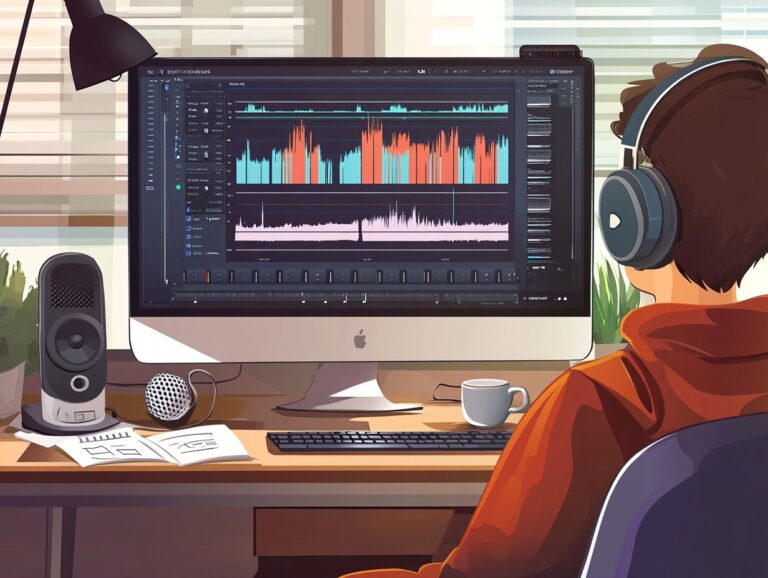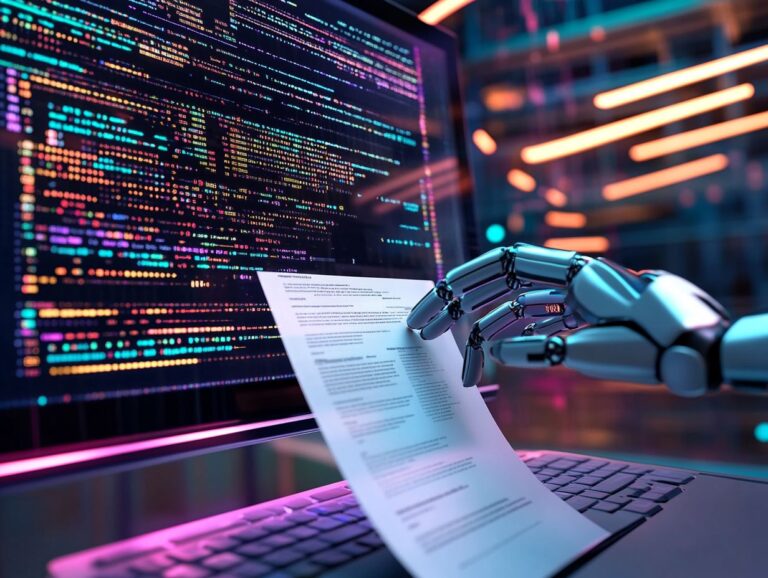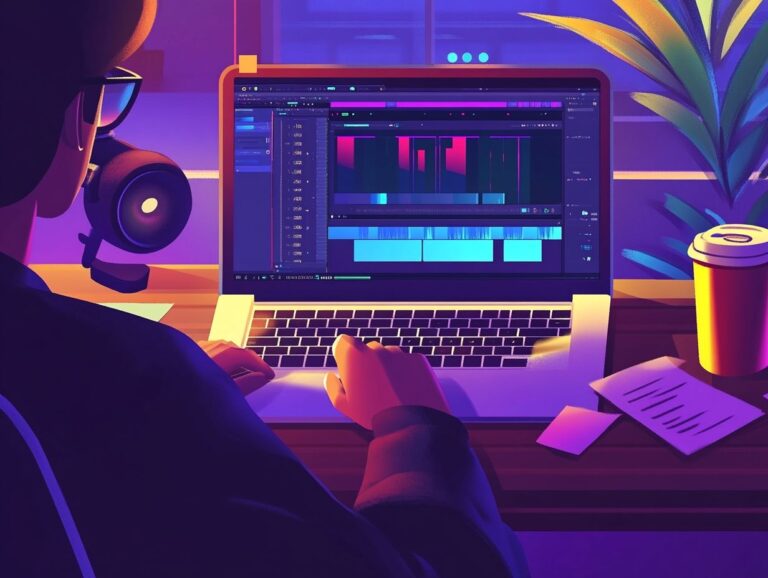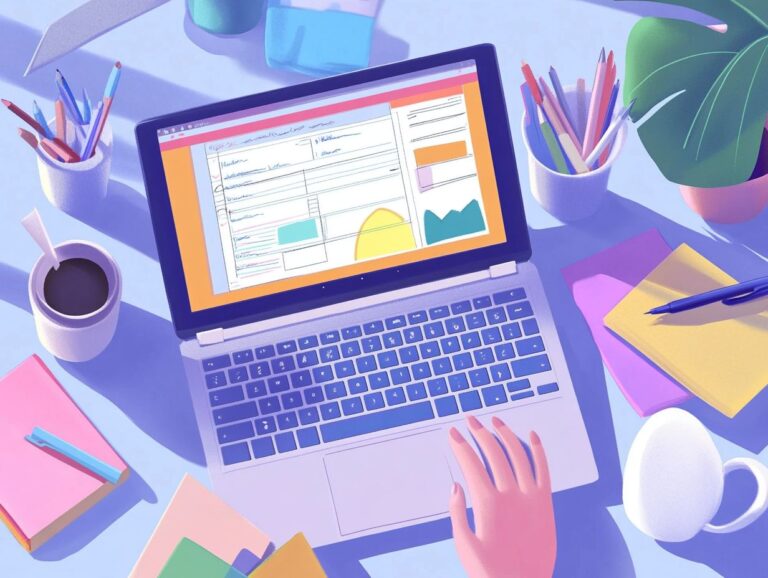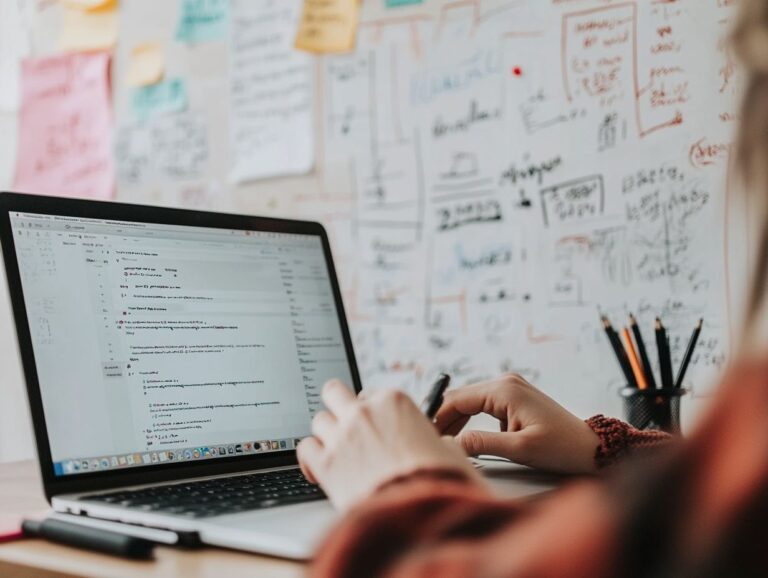How to Translate a Video Using AI?
In our increasingly globalized world, video content has the power to transcend language barriers, making effective communication essential.
Video translation allows creators to reach diverse audiences by converting spoken words and on-screen text into multiple languages.
This article explores the significance of video translation, highlighting the benefits, methods, and challenges associated with using technology for this purpose.
Discover cutting-edge tools and best practices that can enhance the accessibility and impact of your video content.
Contents
- Key Takeaways:
- What is Video Translation?
- Why is Video Translation Important?
- How Does AI Translate Videos?
- What Are the Challenges of AI Video Translation?
- How to Use AI for Video Translation?
- What Are the Available AI Video Translation Tools?
- What Are the Future Developments in AI Video Translation?
- Frequently Asked Questions
- 1. How does AI help in translating a video?
- 2. Can AI accurately translate any language in a video?
- 3. What types of videos can be translated using AI?
- 4. Is it possible to edit the translations made by AI?
- 5. How accurate is AI translation compared to human translation?
- 6. Can AI translate videos with multiple speakers?
Key Takeaways:
What is Video Translation?
Video translation is the process of converting video content from one language to another, enabling content creators to reach a global audience. This process includes translating spoken material and adapting visual elements, such as on-screen text, signs, and other language-containing elements, to fit the linguistic context of the target audience. This ensures effective and accurate communication of the video’s message.
Video translation is a complex undertaking that involves several steps. The first step is to create a transcript of the video content in its original language, which can be accomplished manually or with the assistance of automated tools. Once the transcript is ready, it is translated into the target language, taking into account cultural nuances and idiomatic expressions. After completing the translation, the next step is to record the audio, which can be done by hiring professional voice actors or utilizing AI dubbing technology. The final step involves adding any necessary visual components, such as subtitles or graphics, to complete the translation process.
In today’s world, video translation is becoming increasingly important as businesses aim to expand their reach into new markets. By making their video content available in multiple languages, they can attract new customers and foster brand loyalty among existing ones. Innovative tools like AI dubbing technology and voice cloning are transforming the landscape of video translation.
Furthermore, integrating additional localization features, such as subtitles, audio descriptions, and closed captioning, can significantly enhance audience engagement with video content. Subtitles provide translations of spoken content, while audio descriptions offer verbal accounts of visual elements for individuals with visual impairments. Closed captioning displays text of the audio content alongside relevant sounds, making videos accessible to the deaf and hard-of-hearing communities.
Why is Video Translation Important?
Video translation plays a crucial role in today s interconnected world, as it enables content creators to effectively engage with a global audience by breaking down language barriers.
As videos have become a primary source of information and entertainment, translating these resources not only enhances accessibility but also promotes inclusivity among diverse viewer populations.
Advanced AI technologies, including speech synthesis and automated translation services, enable creators to produce high-quality translated content efficiently, significantly improving audience engagement and retention.
What Are the Benefits of Video Translation?
The benefits of video translation are numerous and include the following:
- Audience Engagement: Video translation enables content creators to tailor their material for viewers who speak different languages. This personalization fosters a deeper connection with the content, leading to improved viewer retention and satisfaction.
- Cultural Relevance: As the demand for culturally diverse content increases, video translation helps creators bridge cultural divides, making their videos more relevant to international audiences.
- Message Integrity: Video translation ensures that critical information is accurately communicated and remains intact throughout the translation process.
- Legal Compliance: Enhanced accessibility satisfies the legal requirements in certain regions, expanding the potential consumer base while fulfilling representation mandates.
- Enhanced Credibility: High-quality video translation not only engages viewers but also boosts a creator’s credibility and reliability in a competitive market.
Examples from the video streaming industry and educational platforms illustrate how effective video translation can engage audiences and significantly enhance a creator s credibility and reliability.
How Does AI Translate Videos?
AI translates videos through algorithms that leverage speech synthesis, voice cloning, and AI dubbing technologies, fundamentally transforming the traditional translation process. AI-powered tools analyze the audio and visual components of video files to deliver accurate translations that maintain context and convey emotion.
These systems frequently incorporate real-time collaboration features, allowing content creators to refine translations instantly, thereby enhancing accessibility and viewer enjoyment. Platforms such as Maestra and ElevenLabs have been at the forefront of these technologies, making AI video translation both easy and efficient.
What Are the Different Methods of AI Video Translation?
AI video translation encompasses various methods, including automated translation services, voiceovers, and AI voice generation techniques. These approaches utilize complex algorithms to automatically translate spoken content into other languages while enabling content producers to maintain the original tone and intent of the message.
For instance, automated translation tools, such as auto subtitle generators and transcription services, are often used together to enhance workflow and expedite the translation process.
The implementation of AI video translation significantly reduces the time required to localize content and increases the accuracy of translations in conveying nuanced meanings. Automated translation services leverage neural networks trained on extensive datasets, resulting in higher quality translations compared to older methods that relied on manual transcription and human translators.
Additionally, voiceover techniques enhance viewer engagement by creating a more immersive experience, while advanced AI voice generation enables the creation of realistic, multilingual narrations that preserve the emotional tone of the speaker. This combination of technologies offers a more efficient and cost-effective means of reaching a global audience.
What Are the Advantages of Using AI for Video Translation?

The benefits of AI video translation include cost-effectiveness, improved accuracy, and enhanced collaboration among video production teams. AI systems are designed to provide high-quality translations with minimal human intervention, which significantly reduces translation costs.
Collaborative editing features enable multiple users to work on translations simultaneously, ensuring that the final product meets both high-quality standards and diverse linguistic requirements. The rise of cloud-based tools further enhances collaboration.
AI translation solutions are typically offered as services that allow various stakeholders to upload, edit, and review translations in a shared environment. This approach not only speeds up the process but also allows experts to verify accuracy, context, and cultural appropriateness, resulting in a polished final product that aligns with the expectations of the target audience.
What Are the Challenges of AI Video Translation?
AI video translation can be inefficient due to several challenges, including limitations in understanding context, potential translation errors, and the complexities associated with different languages and dialects.
AI systems often struggle with idiomatic expressions and cultural nuances, which can result in inaccuracies that hinder effective communication. Despite efforts to overcome language barriers, the inherent complexities of human language continue to pose obstacles for AI systems.
What Are the Limitations of AI Video Translation?
The limitations of AI video translation stem primarily from the challenges of accurately interpreting the context and nuances inherent in human language. Despite significant advancements in machine learning algorithms, these systems can still misinterpret colloquialisms, cultural references, and emotional subtleties, resulting in a lack of fidelity.
This issue is particularly evident in languages rich in idiomatic expressions that require contextual understanding, which AI tools often lack. For instance, a phrase like “kick the bucket” literally translates to an idiom about death, but an AI may fail to recognize its figurative meaning when translating for a non-native speaker.
Similarly, in videos that involve humor or sarcasm, the AI’s inability to detect tone can completely alter the intended message. This not only highlights the technological challenges present in such systems but also underscores the essential role of human intervention.
Skilled translators offer crucial contextual knowledge and cultural sensitivity, ensuring that translations are not only accurate but also meaningful for target audiences.
What Are the Potential Errors in AI Video Translation?
Potential errors in AI video translation can include inaccurate speech translation, subtitle mismatches, and a failure to convey the appropriate tone or emotion. These errors stem from the inherent limitations of machine learning models, which process translations without context. Such inaccuracies can lead to misunderstandings for viewers, particularly when dealing with languages that are structurally and culturally distinct, thereby reinforcing language barriers.
For instance, an AI may translate a humorous colloquialism literally, stripping it of its contextual relevance and leaving viewers puzzled if they are not familiar with the cultural nuances of the original language. Key phrases may be altered or omitted, resulting in an overall tone that does not align with the video’s mood and diminishing the emotional impact of a scene.
The prevalence of these errors underscores the necessity for careful oversight and validation of AI video translations to ensure they are meaningful and true to the original content. Implementing these measures will enhance the viewer’s experience and engagement.
How to Use AI for Video Translation?
The process of using AI for video translation is systematic, allowing content creators to fully leverage the available technologies. It typically begins with selecting user-friendly AI tools for video translation, such as Maestra, HeyGen, or other similar solutions.
After selecting the tools, video files and scripts are prepared for translation. Finally, established workflows and best practices for video translation are implemented to ensure an efficient and high-quality process, enabling creators to reach broader audiences more effectively.
What Are the Steps Involved in Using AI for Video Translation?
The process of using AI for video translation involves several key steps, including selecting the appropriate AI video translation tools, preparing the content, and implementing the translation process smoothly.
The selection step is crucial, as the quality of the translation largely depends on the tools chosen. Creators should consider factors such as ease of use, compatibility with existing workflows, and robust support for various languages.
Once the appropriate tools are selected, the video content must be carefully prepared to ensure that scripts and visuals align with the cultural contexts of the target audience. Next, creators can utilize tools that offer AI-driven transcription services to convert spoken language into text with high accuracy.
Following this, the implementation phase can incorporate AI dubbing or voice cloning to create natural-sounding voiceovers. Together, these components contribute to a smoother overall translation process.
What Are the Best Practices for AI Video Translation?
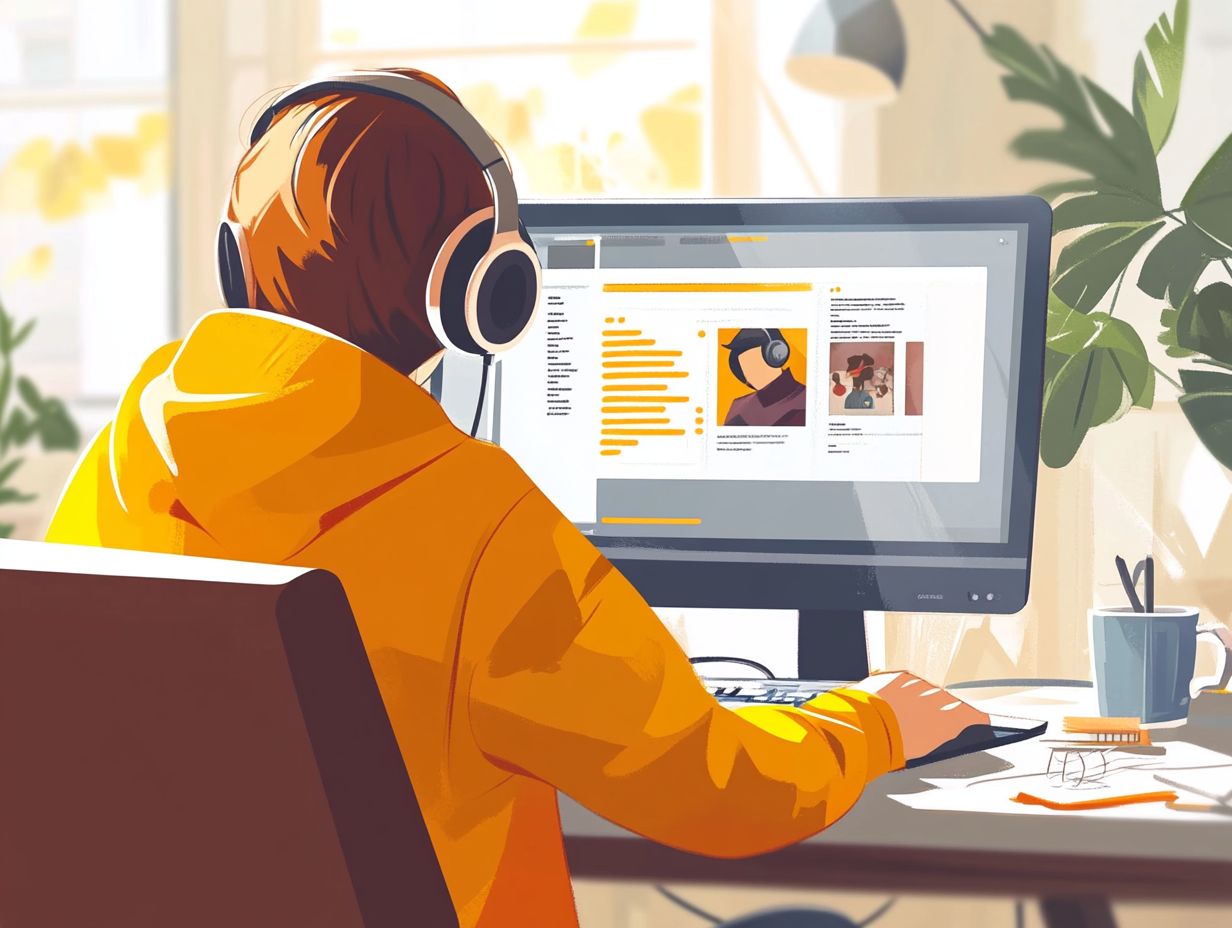
Best practices for AI video translation involve strategies that ensure optimal accuracy, audience engagement, and seamless integration into existing content workflows. Utilizing high-quality AI tools, such as localization stations, is essential to streamline the translation process. AI-generated translations must be reviewed for both accuracy and cultural relevance to ensure they are suitable for the target audience and effectively eliminate language barriers, which is one of the primary objectives of translation.
To enhance the authenticity of the translations, incorporating feedback from native speakers is crucial. This approach helps guarantee that idiomatic expressions and colloquialisms are translated in a way that resonates with the target audience. Additionally, understanding the cultural context of the subject matter is vital for providing the most relevant experience to viewers, thereby fostering trust and connection with them.
Engaging with audiences requires real-time feedback options, such as interactive subtitles or dubbing that aligns with spoken dialogue. Consequently, a well-planned AI translation process can significantly contribute to expanding audience reach while improving viewer satisfaction.
What Are the Available AI Video Translation Tools?
Content creators have access to a variety of AI video translation tools, each offering unique features and capabilities that enhance the translation process.
Leading tools such as Maestra, ElevenLabs, and HeyGen provide advanced functionalities, including AI dubbing, voice cloning, and seamless integration with various video editing platforms.
These tools not only streamline the translation workflow but also ensure high-quality outputs that meet the needs of a global audience.
What Are the Features of Each Tool?
Each AI video translation tool offers unique features that cater to different aspects of video translation workflows. For instance, Maestra provides premium AI voices and advanced editing capabilities, setting it apart from other tools. ElevenLabs excels in voice cloning and real-time translation features, while HeyGen boasts user-friendly interfaces and collaborative editing options that enable content creators to manage their translation projects more effectively.
These technologies streamline workflows and enhance translation quality. Maestra s intuitive platform allows for greater control over audio elements, ensuring that speech nuances are preserved. ElevenLabs offers powerful voice customization options, enabling users to craft a distinctive audio identity for their projects, which results in a more authentic experience for viewers. Meanwhile, HeyGen emphasizes collaboration, allowing teams to share insights and make adjustments in real time, leading to a more polished final product.
Each tool addresses specific needs with its unique strengths, resulting in video translation processes that are both more efficient and more effective.
How Do These Tools Compare to Traditional Translation Methods?
AI video translation tools offer several advantages over traditional translation methods, including accuracy, efficiency, and overall cost-effectiveness. While manual translation is prone to human error and can be time-consuming, AI tools provide fast and precise translations that can be updated in real-time.
This capability alleviates the burden on content creators and enhances the quality and accessibility of translated video content for audiences worldwide. Utilizing AI-driven solutions ensures that translations are not only quick but also contextually accurate, minimizing the loss of nuance often encountered in traditional approaches.
These tools leverage machine learning techniques to learn from previous translations, continuously improving their performance over time. In contrast, traditional methods typically require multiple reviewers to identify errors, resulting in higher labor costs and longer turnaround times.
This shift towards automation enables organizations to allocate their resources more effectively, enabling them to scale their translation needs without compromising quality.
What Are the Future Developments in AI Video Translation?
The future of AI video translation is anticipated to undergo transformative improvements as technology continues to advance and the demand for localized content grows.
With the development of AI technology, we can expect significant enhancements in translation accuracy, a deeper understanding of cultural nuances, and the creation of more sophisticated AI dubbing tools.
These advancements will not only streamline the translation process for content creators but also offer more engaging and interactive experiences for audiences worldwide.
What Are the Potential Impacts of AI on the Translation Industry?
The introduction of AI into the translation industry will significantly impact content localization and audience engagement strategies. The faster turnaround times and increased accuracy of AI technology in translations will enable businesses and content creators to effectively meet the needs of diverse global markets. This shift is likely to drive a growing demand for AI-powered translation tools as organizations strive to enhance viewer experiences and reduce language barriers.
By adopting these technologies, companies can not only boost operational efficiency but also strengthen their relationships with international audiences. The rapid pace of content localization allows marketing campaigns to be more impactful, attracting customers who may have previously felt disconnected due to language barriers.
Furthermore, AI takes into account cultural nuances in translation, ensuring that messages are conveyed accurately and effectively. This evolving landscape presents opportunities for businesses to innovate and leverage new technologies while demonstrating their commitment to inclusivity, ultimately improving engagement and satisfaction among their diverse customer bases.
How Can AI Improve Video Translation in the Future?
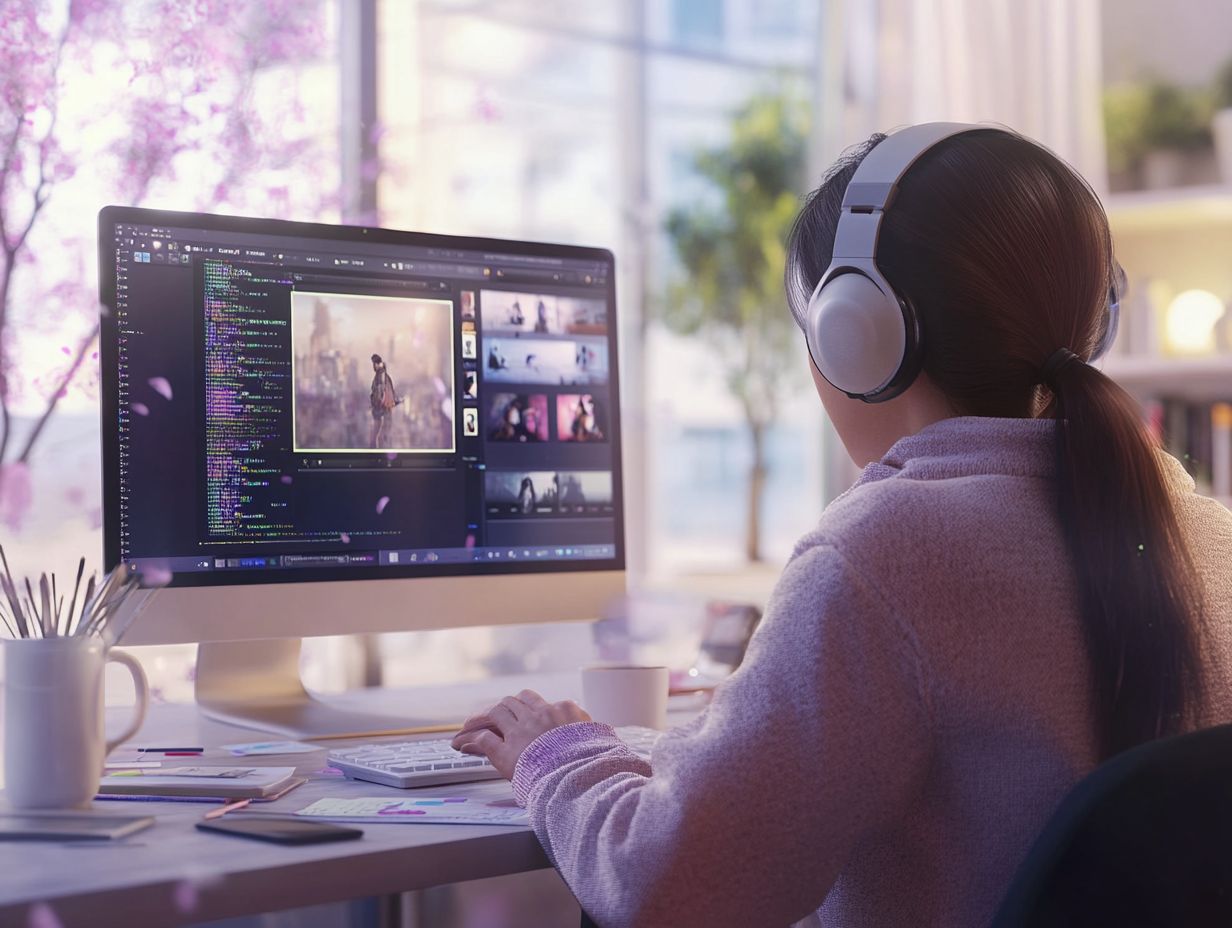
In the future, AI will enhance video translation through the development of new technologies and user-friendly interfaces that streamline the process. As deep learning and natural language processing continue to advance, AI systems will provide increasingly accurate translations that consider context, emotion, and culture.
This improvement will enable content creators to produce higher-quality, more engaging videos that resonate with diverse audiences, ultimately increasing the overall value of video content in the global marketplace.
Frequently Asked Questions
1. How does AI help in translating a video?
AI uses advanced algorithms and natural language processing to accurately translate the speech and text in a video in real-time, making the process faster and more accurate than human translation.
2. Can AI accurately translate any language in a video?
While AI has advanced significantly in its ability to translate various languages, it may still struggle with uncommon or lesser-known languages. However, it is constantly learning and improving, so its translation capabilities are expanding.
3. What types of videos can be translated using AI?
AI can be used to translate both live and pre-recorded videos, including lectures, interviews, presentations, and more. It can also translate different types of media, such as subtitles, closed captions, and voiceovers.
4. Is it possible to edit the translations made by AI?
Yes, many AI translation tools allow for manual editing of the translated text, allowing users to make any necessary corrections or adjustments for accuracy or context.
5. How accurate is AI translation compared to human translation?
AI translation is constantly improving and is currently able to achieve a high level of accuracy, but it may not be as nuanced or context-specific as human translation. It can, however, handle large volumes of content at a much faster rate.
6. Can AI translate videos with multiple speakers?
Yes, AI is able to recognize and differentiate between different speakers in a video, making it possible to accurately translate the dialogue of multiple speakers.


